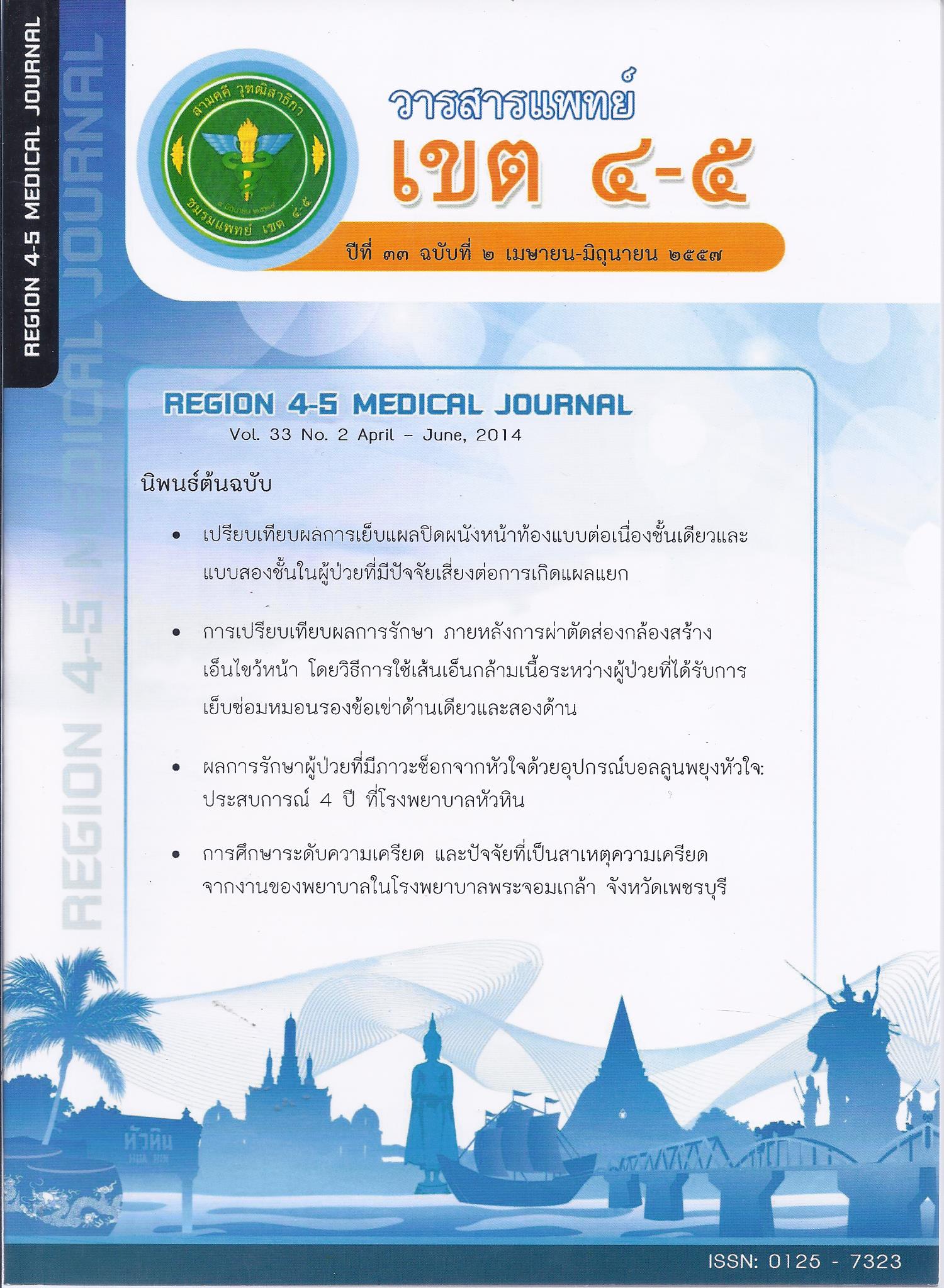ปัจจัยเสี่ยงและผลกระทบของปอดอักเสบขณะใช้เครื่องช่วยหายใจในทารกแรกเกิดในโรงพยาบาลเจ้าพระยายมราช
คำสำคัญ:
การศึกษาระดับอุดมศึกษา, การศึกษาต่อปริญญาโท, การตัดสินใจศึกษาต่อ, นิสิตระดับปริญญาตรี, มหาวิทยาลัยบูรพาบทคัดย่อ
Objective: To study the risk factors and outcomes of ventilator associated pneumonia in neonates at Chaoprayayomraj Hospital.
Methods: The retrospective study was done from reviews of medical records of neonates receiving on ventilators at neonatal intensive care unit in Chaoprayayomraj Hospital during October 2011 through September 2013. Data were collected totally of 217 patients, 39 cases were ventilator associated pneumonia and 178 cases were not ventilator associated pneumonia. Patients were evaluated in demographic data, presenting signs, laboratory data, risk factors and outcomes of ventilator associated pneumonia.
Result: Most of patients were preterm infants (71%). We found that mean of gestational age and median of birth weight in ventilator associated pneumonia group were less than non ventilator associated pneumonia group (mean of gestational age was 30.8 and 33.3 weeks respectively; median of birth weight was 1,210 and 1,805 gram respectively). Common signs in ventilator associated pneumonia group were increase of pulmonary secretion (84.6%) and dyspnea (79.5%). Positive bacterial culture from pulmonary secretion were 82.1% of cases with most common organism was Acinetobacter baumanii MDR (51.3%). Most frequent period before ventilator associated pneumonia was 5-15 days after intubation. The risk factors of ventilator associated pneumonia in neonates were extremely low birth weight (birth weight < 1,000 gram), patent ductus arteriosus, early neonatal sepsis and nebulization with increased risk to 4.8, 5.7, 3 and 10.2 times respectively. Ventilator associated pneumonia had more complications with bronchopulmonary dysplasia, intraventricular hemorrhage and retinopathy of prematurity with increased risk to 17.8, 3 and 14.8 times respectively, it also had effect on increase of intubation days, admission days and hospital cost (p value < 0.001).
Conclusion : Ventilator associated pneumonia in neonates had effect on more complications, increases of intubation days, admission days and hospital cost. The risk factors of ventilator associated pneumonia in neonates were extremely low birth weight, patent ductus arteriosus, early neonatal sepsis and nebulization.
ดาวน์โหลด
เผยแพร่แล้ว
รูปแบบการอ้างอิง
ฉบับ
ประเภทบทความ
สัญญาอนุญาต
ลิขสิทธิ์บทความเป็นของผู้เขียนบทความ แต่หากผลงานของท่านได้รับการพิจารณาตีพิมพ์ลงวารสารแพทย์เขต 4-5 จะคงไว้ซึ่งสิทธิ์ในการตีพิมพ์ครั้งแรกด้วยเหตุที่บทความจะปรากฎในวารสารที่เข้าถึงได้ จึงอนุญาตให้นำบทความในวารสารไปใช้ประโยชน์ได้ในเชิงวิชาการโดยจำเป็นต้องมีการอ้างอิงถึงชื่อวารสารอย่างถูกต้อง แต่ไม่อนุญาตให้นำไปใช้ในเชิงพาณิชย์




